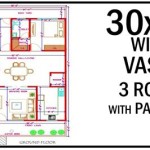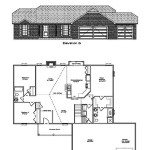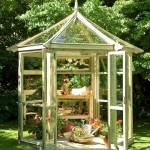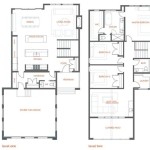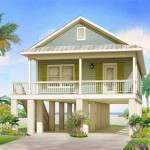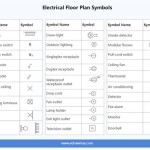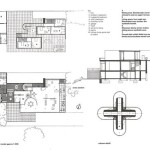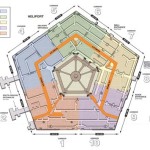30-40 West Facing Duplex House Plans
West-facing duplex houses present unique design challenges and opportunities. Harnessing the afternoon sun while mitigating excessive heat gain requires careful planning. This article explores key considerations for designing a successful west-facing duplex, ranging from 30 to 40 feet wide.
Key Considerations for West-Facing Duplexes
Designing a comfortable and energy-efficient west-facing duplex involves addressing the western sun's impact. Proper ventilation, shading strategies, and material choices play crucial roles in optimizing the living environment. Consider these points when planning a west-facing duplex:
- Orientation: Optimize the layout to minimize direct western exposure for living spaces.
- Ventilation: Design for cross-ventilation to promote airflow and dissipate heat.
- Shading: Incorporate shading devices like overhangs, pergolas, and vertical screens.
- Landscaping: Utilize strategically placed trees and shrubs to provide natural shade.
- Window Placement: Minimize large west-facing windows, opting for smaller, strategically positioned openings.
- Insulation: Invest in high-quality insulation to reduce heat transfer.
- Cool Roofing: Consider reflective roofing materials to minimize heat absorption.
Space Optimization in 30-40 Feet Wide Duplexes
Effective space planning is paramount in duplex designs, particularly within the 30 to 40 feet width constraint. Maximizing usable space while maintaining comfortable living areas requires careful consideration of layout and circulation.
- Open Floor Plans: Consider open-concept living, dining, and kitchen areas to create a sense of spaciousness.
- Vertical Space Utilization: Maximize vertical space with lofts or high ceilings where feasible.
- Staircase Design: Efficient staircase design can save valuable floor space.
- Built-in Storage: Incorporate built-in storage solutions to optimize organization and minimize clutter.
- Multi-Functional Spaces: Design spaces that can serve multiple purposes, like a guest room that doubles as a home office.
Material Selection for West-Facing Duplexes
Material choices significantly impact a west-facing duplex's thermal performance and overall durability. Selecting materials that resist heat absorption and weathering is essential for long-term comfort and maintenance.
- Exterior Walls: Opt for light-colored exterior wall finishes to reflect sunlight and reduce heat absorption. Consider materials with high thermal mass.
- Roofing: Choose reflective roofing materials like cool roofs or light-colored tiles to minimize heat gain.
- Windows: Select energy-efficient windows with low-E coatings to reduce heat transfer.
- Flooring: Use materials that remain cool underfoot, such as ceramic tiles or light-colored wood.
Balancing Privacy and Natural Light
Maintaining privacy while maximizing natural light is a delicate balance in duplex designs. Strategic window placement and the use of screening elements can achieve both objectives. Consider the following:
- Window Placement: Position windows to capture desirable views while minimizing overlooking from neighboring properties.
- Screening Elements: Utilize screens, louvers, or strategically placed plants to provide privacy without completely blocking natural light.
- Frosted Glass: Employ frosted or textured glass for windows in bathrooms or other areas requiring increased privacy.
Landscaping for West-Facing Duplexes
Landscaping plays a vital role in mitigating the effects of the western sun. Strategically placed trees and plants can provide significant shade and improve the microclimate around the duplex.
- Deciduous Trees: Plant deciduous trees on the west side to provide shade during summer while allowing sunlight in winter.
- Vertical Greenery: Incorporate vertical green walls or trellises with climbing plants to provide shade and improve aesthetics.
- Shrubs and Groundcover: Utilize shrubs and groundcover to minimize heat reflection from paved surfaces.
Ventilation Strategies for West-Facing Duplexes
Proper ventilation is crucial for maintaining a comfortable indoor environment in west-facing duplexes. Strategies for maximizing airflow and minimizing heat buildup include:
- Cross-Ventilation: Design for cross-ventilation by placing windows and doors on opposite sides of the building to encourage airflow.
- Stack Effect Ventilation: Utilize the stack effect by incorporating high and low vents to promote natural ventilation.
- Ceiling Fans: Install ceiling fans to improve air circulation and create a cooling effect.
- Whole-House Ventilation Systems: Consider installing a whole-house ventilation system for optimal airflow and air quality.
Budgeting and Cost Considerations
Developing a realistic budget is essential for any construction project. The cost of a west-facing duplex can vary depending on several factors:
- Size and Design: Larger and more complex designs generally incur higher costs.
- Material Selection: Choosing high-quality, durable materials can increase upfront costs but may offer long-term savings.
- Labor Costs: Labor costs can vary depending on location and the complexity of the project.
- Site Conditions: Difficult site conditions can add to the overall project cost.

30x40 West Facing Duplex Plan In First Floor One House Plans

30x40 West Facing House Plan Duplex 3bhk G 1 Ground Floor Plans

30x40 West Facing Duplex Second Floor House Plan 30x50 Plans Layout 2bhk

30x40 House Plans As Per Vastu West Facing Site Duplex 3bhk G 1 Ground Floor 2bhk Plan

Duplex House Plans For 30x40 Site 5 Bhk

30x40 West Facing Vastu House Design Plan And Designs Books

30 X40 West Facing Duplex First Floor House 30x40 Plans Square

30x40 West Facing House Vastu Plan And Designs Books

30x40 West Facing Ground Floor 2bhk Plan House Plans Square

30 X 40 Duplex West Face House Plan Details

